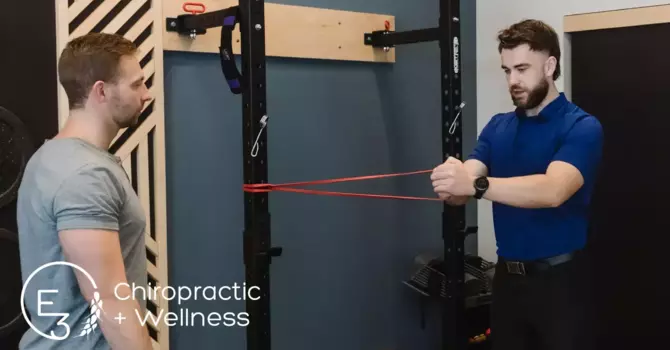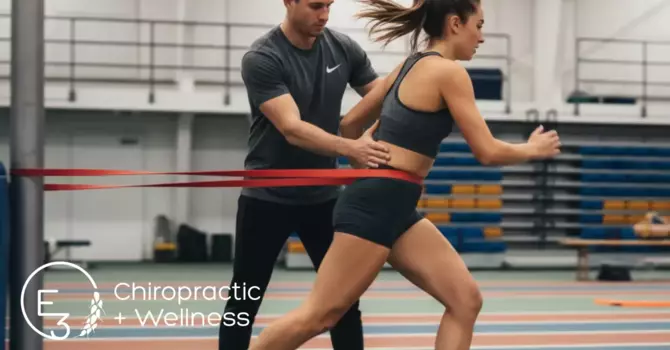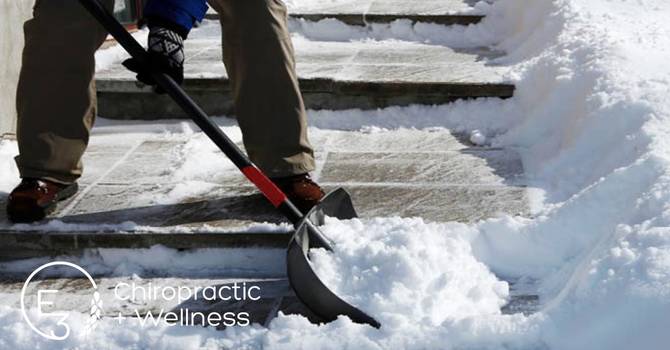
If you've ever experienced low back pain, you're not alone. It's one of the most common ailments people face, affecting their daily lives and limiting their mobility. But what happens when that familiar low back pain starts to spread to your hips?
Many people don't realize that low back pain and hip pain are often connected. Understanding how these areas are linked can help you find the right treatment and avoid prolonged discomfort.
At E3 Chiropractic + Wellness, we specialize in diagnosing and treating these types of issues, helping our clients in Saskatoon and beyond live pain-free lives.
In this blog, we'll explore how low back pain can refer to the hips, why this connection happens, and how chiropractic care can help. If you're in Saskatoon and dealing with low back or hip pain, this information may be exactly what you need to regain your mobility and comfort.
The Common Problem of Low Back and Hip Pain
Imagine this scenario: You wake up one morning, and your lower back feels tight and achy. You dismiss it as a result of sleeping in an awkward position or overdoing it at the gym. A few days later, you notice that the pain is not just confined to your lower back but has started to radiate into your hips. Sitting down, standing up, and walking all become uncomfortable. You're now dealing with both low back and hip pain, and it's affecting your quality of life.
This is a common situation that many people face. But why does this happen? The answer lies in the complex interplay between your spine, muscles, nerves, and joints. Let's take a closer look.
The Connection Between the Low Back and the Hips
Your lower back and hips are anatomically and functionally linked. The lower back, or lumbar spine, is responsible for supporting much of your upper body weight and allowing for movement such as bending and twisting.
Your hips, on the other hand, play a critical role in maintaining stability and mobility for activities like walking, running, and sitting.
But the relationship between the lower back and hips goes deeper than just proximity. Several factors contribute to pain in one area being felt in the other, such as:
Shared Nerve Pathways: The nerves in your lower back, especially the sciatic nerve, travel through the lumbar spine and down to your hips, buttocks, and legs. If these nerves become irritated or compressed in the lower back, the pain can radiate down into the hips, a phenomenon known as "referred pain."
Muscle Imbalances: The muscles of the lower back and hips work together to provide movement and stability. If there's tension, strain, or injury in one area, it can cause compensatory pain and dysfunction in the other. For instance, tight hip flexor muscles (located at the front of the hip) can pull on the lower back, leading to discomfort in both regions.
Joint Dysfunction: The sacroiliac (SI) joint, which connects the lower spine to the pelvis, is another common source of pain. Dysfunction in the SI joint can cause pain that radiates from the lower back into the hips and even the legs. Similarly, issues with the hip joint itself, such as arthritis, can cause compensatory pain in the lower back.
How Low Back Pain Refers to the Hips
Low back pain can refer to the hips in several ways. One of the most common causes is sciatica, which occurs when the sciatic nerve becomes compressed or irritated.
This large nerve runs from the lower spine through the hips and down each leg. When the nerve is pinched—often due to a herniated disc in the lower back—it can cause shooting pain, numbness, or tingling that radiates into the hips and down the legs.
Another common issue is lumbar spinal stenosis, a condition where the spaces within the spine narrow, putting pressure on the nerves. This can lead to pain in the lower back that spreads to the hips and legs, especially when standing or walking.
Additionally, muscle strain or ligament sprain in the lower back can lead to referred pain in the hips. For example, if you overuse or strain the muscles that support your spine, it can cause compensatory pain in the hip area. These soft tissue injuries often develop over time due to poor posture, overuse, or improper lifting techniques.
How Chiropractic Care Can Help
If you're dealing with low back pain that’s referring to your hips, you don't have to suffer in silence. Chiropractic care is an effective, non-invasive solution that can help you find relief and restore your quality of life.
At E3 Chiropractic + Wellness in Saskatoon, we take a holistic approach to diagnosing and treating pain. Our goal is to identify the root cause of your discomfort and create a personalized treatment plan that addresses both your low back and hip pain.
Here’s how chiropractic care can help:
1. Spinal Adjustments
Chiropractic adjustments are a very common treatment method used. These gentle, targeted manipulations of the spine help to improve the motion of joints, improving joint function. By addressing spinal joint stiffness, we can help reduce referred pain that may be causing pain to the hips.
2. The McKenzie Method of Diagnosis and Therapy
The McKenzie Method, also known as Mechanical Diagnosis and Therapy (MDT), is a highly effective approach for diagnosing and treating spinal and joint pain. This method involves a thorough assessment to identify the specific movement patterns or positions that either relieve or aggravate your pain.
Based on this evaluation, personalized exercises are prescribed to centralize and reduce the pain, often moving it away from the hips and back toward the lower spine, where it can be more effectively treated.
At E3 Chiropractic + Wellness, we incorporate the McKenzie Method to empower patients with self-management techniques, helping them to reduce and control pain while preventing future episodes.
3. Soft Tissue Therapy
In addition to spinal adjustments, we offer soft tissue therapy to address muscle imbalances and tightness. Techniques such as massage, trigger point therapy, and myofascial release help to relieve tension in the muscles of the lower back and hips, reducing pain and improving flexibility.
4. Posture and Ergonomic Advice
Poor posture and improper ergonomics are often the underlying causes of low back and hip pain. We’ll provide guidance on how to improve your posture, whether you're sitting at a desk all day or engaging in physical activity. By correcting these habits, we can help prevent pain from recurring.
5. Exercise and Rehabilitation
Exercise is crucial for maintaining mobility and strength in the lower back and hips. At E3 Chiropractic + Wellness, we design customized exercise programs to strengthen the muscles that support your spine and hips. These exercises help to improve stability, reduce pain, and prevent future injury.
Why Choose E3 Chiropractic + Wellness?
At E3 Chiropractic + Wellness, we believe in a comprehensive approach to pain management. Our experienced team of chiropractors in Saskatoon understands the intricate connection between the low back and hips, and we’re committed to helping you find lasting relief.
We know that every patient is unique, which is why we take the time to thoroughly assess your condition and develop a treatment plan tailored to your specific needs. Whether your pain is caused by nerve irritation, muscle strain, or joint dysfunction, our goal is to restore your mobility and quality of life.
Conclusion
Low back pain can be a frustrating and debilitating experience, especially when it starts to radiate to the hips.
However, by understanding the connection between these areas and seeking the right treatment, you can find relief.
If you’re in Saskatoon and dealing with low back or hip pain, the experts at E3 Chiropractic + Wellness are here to help.
Click HERE to book a FREE DISCOVERY CALL and take the first step toward a pain-free life.





